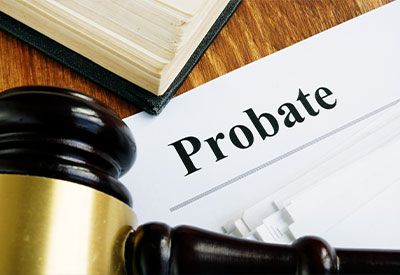Many Americans choose joint tenancy as their primary estate planning tool, attracted by its simplicity and the promise of avoiding probate. What they may not realize is that this seemingly straightforward ownership arrangement can undermine their broader estate planning goals and create significant tax and financial security issues for their loved ones. Before you rely on joint tenancy as your estate planning strategy, it's essential to understand the benefits and potential pitfalls that could affect your family's financial future.
What is joint tenancy and why do people choose it?
Joint tenancy with right of survivorship is a form of property ownership where two or more people own an asset together, with equal ownership rights. The defining feature of joint tenancy is the "right of survivorship" – when one owner dies, their ownership share automatically transfers to the surviving owner(s), bypassing the probate process. For married couples especially, the family home is frequently held as joint tenants with right of survivorship.
Many people choose joint tenancy for its benefits:
- Simplicity in setup (just adding names to titles or accounts).
- Automatic transfer upon death without court involvement.
- Avoidance of probate for the specific asset.
- Convenience for managing affairs, especially between spouses.
What types of assets are typically held in joint tenancy?

Joint tenancy is most commonly used for real estate properties, particularly family homes, vacation properties and investment real estate. Financial accounts frequently held in joint tenancy include checking and savings accounts, CDs and brokerage accounts. Vehicles, boats and valuable personal property may also be jointly owned, though practices vary by state. Some investment assets like stocks, bonds and mutual fund accounts can be held in joint tenancy, while others like retirement accounts (IRAs, 401(k)s) cannot due to their individual nature. Life insurance policies and business interests typically use different ownership structures. For married couples, some states default to "tenancy by the entirety" rather than standard joint tenancy.
How can joint tenancy disrupt your plans for blended families?
For blended families, joint tenancy can present particular challenges. Consider this common scenario: After remarrying, you place your assets in joint tenancy with your new spouse. Upon your death, jointly held assets automatically transfer to your spouse, regardless of what your will says.
Even with the best intentions, your surviving spouse:
- Has no legal obligation to provide for your biological children.
- Might remarry, potentially directing assets to a new spouse or stepchildren.
- Could face health issues requiring expensive care that depletes the assets.
- Might change their estate plan after your death in ways you never intended.
This situation can leave your biological children effectively disinherited from assets you worked a lifetime to build. A more sophisticated estate plan using trusts can help ensure all your loved ones are protected according to your wishes.
Does joint tenancy really eliminate probate?

While joint tenancy does allow an asset to avoid probate at the first death, it merely postpones probate rather than eliminating it entirely. When the last joint owner dies, the property will still need to go through probate unless additional planning steps are taken.
A more comprehensive approach using revocable living trusts can avoid probate through subsequent generations while providing significantly more control over asset distribution, creditor protection and tax planning opportunities.
How does joint tenancy expose your assets to others' problems?
One of the most serious risks of joint tenancy is that it exposes your property to the financial troubles of your co-owners. When you add someone as a joint tenant, you give them an ownership interest in your property – and that interest becomes vulnerable to their creditors and legal issues.
Your jointly held assets could be at risk if your co-owner:
- Files for bankruptcy.
- Gets divorced (their spouse may claim part of the joint asset).
- Faces a lawsuit or judgment.
- Develops substance abuse or gambling problems.
- Mismanages finances.
These situations could force the sale of your property or drain accounts you depend on, through no fault of your own. This risk exists even when the joint tenant is a trusted family member, as circumstances can change unexpectedly.
What tax consequences can joint tenancy create?
Joint tenancy can create unfavorable tax situations, particularly regarding capital gains taxes. When you own property individually and pass it to heirs upon death, that property receives a full "stepped-up" tax basis to its fair market value on your date of death. This potentially eliminates capital gains tax on all appreciation that occurred during your lifetime.
With jointly owned property, however, only the deceased owner's portion receives this stepped-up basis. The result? When the surviving owner eventually sells the property, they may face significant capital gains taxes that could have been avoided with proper planning.
For example, consider a house purchased for $100,000 that's worth $500,000 when one joint tenant dies. Instead of receiving a full step-up to $500,000, only half the value gets stepped up, potentially creating $200,000 in taxable gains when the property is sold.
How does joint tenancy fall short in protecting against incapacity?

While joint tenancy allows a co-owner to manage assets if one owner becomes incapacitated, this arrangement has significant limitations:
- It only covers jointly held assets, leaving individually owned property unprotected.
- It provides no solution if both owners become incapacitated simultaneously.
- It offers no guidance for health care decisions or personal care preferences.
- It cannot adapt to changing circumstances once incapacity occurs.
A comprehensive incapacity plan including durable powers of attorney, health care directives and possibly a living trust can provide more protection than joint tenancy alone.
What alternatives to joint tenancy exist for estate planning?
Many people default to joint tenancy without exploring the wide range of alternative ownership structures that might better protect their assets and honor their wishes for distributing wealth to future generations. Here are some additional estate planning tools to consider:
- Revocable living trusts. These flexible planning tools avoid probate while maintaining your control during life and directing precise distribution after death. They can protect assets through multiple generations, accommodate blended family situations and provide incapacity protection.
- Durable powers of attorney. These documents appoint trusted individuals to manage your financial affairs if you become incapacitated, without giving them current ownership interests in your property.
- Transfer-on-death designations. Many states allow transfer-on-death deeds for real estate and payable-on-death designations for financial accounts, providing probate avoidance without the risks of current joint ownership.
- Limited liability companies. Family LLCs can provide shared management and eventual transfer of assets while maintaining clear separation of ownership interests and providing liability protection.
When should you consider revising your joint tenancy arrangements?
If any of these situations apply to you, it might be time to reconsider joint tenancy arrangements and explore more comprehensive estate planning options:
- You're in a second marriage with children from previous relationships.
- You've added children to accounts or titles for convenience.
- You own valuable property that has appreciated significantly.
- You're concerned about potential creditor issues or lawsuits.
- You're planning for possible long-term care needs.
- You want to ensure precise distribution of assets among specific beneficiaries.
- You wish to protect inheritances for children or grandchildren from their creditors or divorcing spouses.
Conclusion
Joint tenancy offers apparent simplicity, but that simplicity often comes at a cost to your comprehensive estate plan. While it provides a straightforward way to transfer assets at death, it creates rigidity that cannot adapt to changing family dynamics, financial situations or personal wishes. The convenience it offers in the short term may lead to unintended consequences that affect your family for generations. By considering the full implications of different ownership structures and utilizing the appropriate estate planning tools, you can achieve the efficiency you desire while maintaining the flexibility to protect your assets and loved ones under various circumstances.



